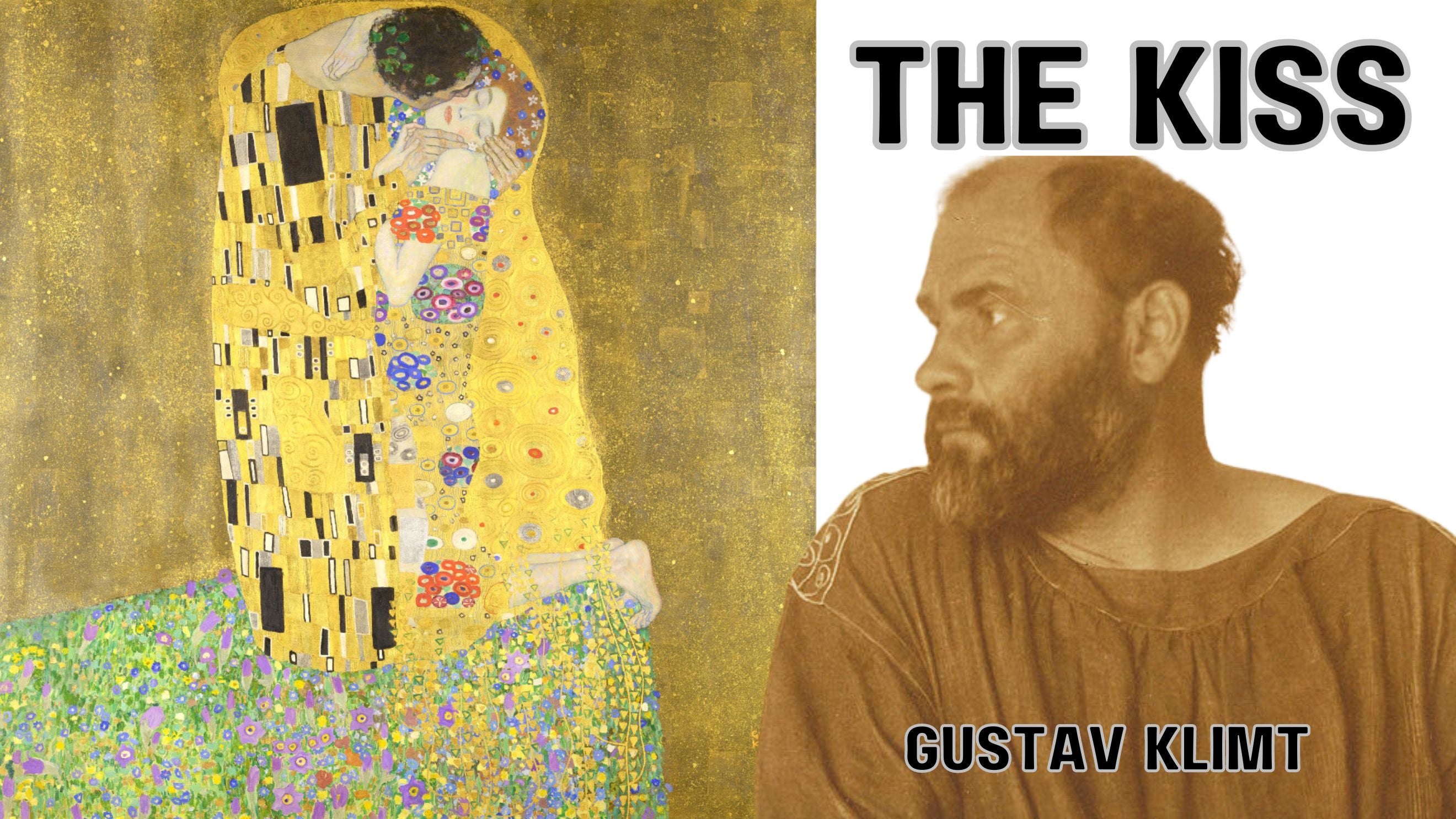The Enigmatic Embrace of "The Kiss"
Gustav Klimt, an Austrian symbolist painter, left an indelible mark on the art world with his masterpiece, "The Kiss." This iconic painting, created between 1907 and 1908, stands as a testament to Klimt's innovative approach to art and his unique blend of symbolism and sensuality.
A Glimpse into Gustav Klimt's Artistic Vision
Gustav Klimt was a prominent figure in the Vienna Secession movement, a group of artists who rebelled against the traditional academic art standards of the time. "The Kiss" epitomizes Klimt's departure from conventional norms, showcasing his distinctive style characterized by intricate patterns, rich symbolism, and a focus on the human form.
The Symbolic Language of "The Kiss"
"The Kiss" is renowned for its symbolism, offering viewers a visual narrative rich in meaning. Klimt employs a shimmering gold leaf background, a hallmark of his "Golden Phase," to symbolize spiritual and eternal love. The couple's embrace, adorned with geometric shapes and intricate patterns, represents the merging of the physical and metaphysical realms.
The Technique Behind the Masterpiece
Gustav Klimt's technique in creating "The Kiss" is as fascinating as the painting itself. The artist combined traditional oil painting with the innovative use of gold leaf, achieving a luminous effect that adds to the overall otherworldly aura of the artwork. Klimt's meticulous attention to detail is evident in the intricate patterns that adorn the couple's clothing, creating a harmonious and mesmerizing visual experience.
The Influence of Byzantine Art
Klimt's interest in Byzantine art is evident in "The Kiss." The use of gold leaf, reminiscent of Byzantine religious icons, imparts a spiritual dimension to the painting. The flattened perspective, elongated forms, and decorative elements allude to the influence of Byzantine mosaics, seamlessly blending the sacred and the sensual.
The Intertwining of Love and Eros
"The Kiss" explores the duality of love and Eros, encapsulating the essence of human connection. The intimate embrace of the couple reflects the erotic nature of their relationship, while the ornate patterns symbolize the spiritual and emotional facets of love. Klimt masterfully captures the complexity of human relationships, intertwining passion and tenderness in a single, timeless image.
Feminine Power in "The Kiss"
Gustav Klimt was known for his celebration of feminine sensuality and empowerment, and "The Kiss" is no exception. The female figure in the painting is adorned with a golden robe, symbolizing her divine and regal nature. Her prominent position in the composition emphasizes the strength and agency of the feminine, challenging traditional gender roles prevalent in art at the time.
FAQs - Unveiling the Mysteries of "The Kiss"
1. Why did Gustav Klimt choose a gold leaf background for "The Kiss"?
- Answer: Klimt's use of a gold leaf background in "The Kiss" is symbolic, representing spiritual and eternal love. The shimmering gold enhances the ethereal quality of the painting, elevating the theme of love to a transcendent level.
2. What is the significance of the geometric patterns in the clothing of the couple?
- Answer: The intricate geometric patterns in the clothing of the couple in "The Kiss" serve a symbolic purpose, representing the interconnectedness of the physical and metaphysical realms. The patterns emphasize the harmonious union of the two lovers.
3. How does "The Kiss" reflect Klimt's departure from traditional artistic norms?
- Answer: Klimt's departure from traditional norms is evident in the unconventional use of gold leaf, intricate patterns, and symbolic elements in "The Kiss." The painting showcases his innovative approach to art, marking a break from academic conventions of the time.
4. What inspired Gustav Klimt to incorporate Byzantine influences into "The Kiss"?
- Answer: Klimt's fascination with Byzantine art, particularly religious icons, inspired the use of gold leaf and decorative elements in "The Kiss." The painting reflects the artist's exploration of spiritual themes and his admiration for the visual language of Byzantine mosaics.
5. How does "The Kiss" embody the theme of love and Eros?
- Answer: "The Kiss" encapsulates the theme of love and Eros through the intimate embrace of the couple. The painting skillfully intertwines passion and tenderness, portraying the complexity of human relationships and the diverse facets of love.
In conclusion, Gustav Klimt's "The Kiss" continues to captivate art enthusiasts worldwide, offering a profound exploration of love, spirituality, and artistic innovation. The painting stands as a timeless testament to Klimt's ability to transcend traditional boundaries and create a visual masterpiece that resonates with audiences across generations.
Prints and Canvas Panels
Related Articles
Gustav Klimt - Artist Profile


